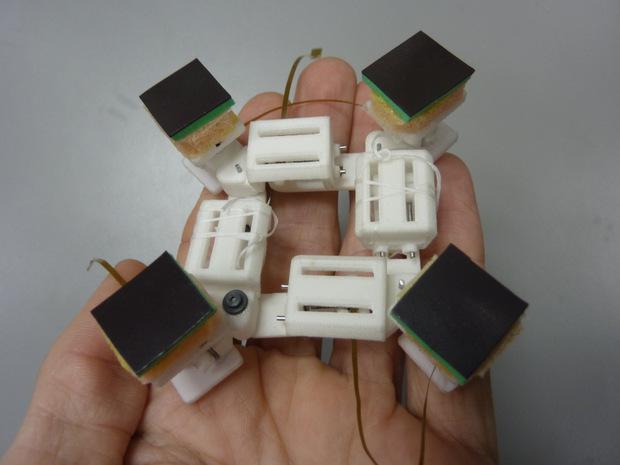From the chest-burster in Alien to the bellybutton bot in The Matrix, most of us are a wee bit squeamish about the whole thing-crawling-around-inside-you experience. And if thoughts of parasites playing poker in your body cavity already keep you up at night, this article probably isn’t for you—because scientists are working on a robot that can walk around inside your gut like a tree frog on a wet leaf.

Photo courtesy University of Leeds
Not just for fun, of course. (You’ll have to pay extra for that.) Modern surgery techniques allow doctors to perform complex tasks with the smallest of incisions, reducing pain and recovery times. However, there are obvious drawbacks to these techniques—namely visibility. That’s why researchers at the University of Leeds are working on a robot small enough to enter the body through the same hole used for laparoscopic surgeries. The robot would be the surgeons’ man on the inside—a crawling camera used to guide other instruments.
Obviously, getting a robot to walk upside down on the abdominal wall isn’t the easiest task in the world. So researchers have once again looked to nature for inspiration.
“Tree frogs have hexagonal patterned channels on their feet that when in contact with a wet surface build capillary bridges, and hence an adhesion force,” said lead researcher professor Anne Neville in a press release. “It is the same kind of idea as a beer glass sticking to a beer mat, but the patterns build a large number of adhesion points that allow our robot to move around on a very slippery surface when it is upside down.”
You might be wondering where exactly there’s room for all this cliffhanging, given how much viscera the human body contains. Well, it’s common for surgeons to pump carbon dioxide into the abdomen to create some workspace. (The body is easily able to absorb and remove carbon dioxide. And unlike oxygen, CO2 is noncombustible.) Watch the prototype in action in the video below, courtesy of the University of Leeds.
Even with this artificial cavity, the frogbot looks painfully huge in its current state. Researchers are working to trim the prototype down to just 20 x 20 x 20 millimeters. (Thanks, guys.) Eventually, the bot will be equipped with cameras, lights, and perhaps even some surgical tools. It still requires several wires to power its motor, but another researcher on the project, Alfonso Montellano López, told me a future version could be wireless—maybe even with power transmitted through the skin. And since the pads can attach to any surface covered by a thin layer of water, the technology might one day be useful for many other biological applications or for climbing robots in wet environments.
Of course, when you’re talking about turning a robot loose beneath the skin, there’s one question that cannot go unasked: What happens if you lose the sucker?
“That’s when the tether comes in handy,” López said. “Either that or the surgeon can insert a conventional laparoscopic camera and retrieve the robot with some tools.”
Personally, I was hoping for a series of increasingly larger, predatory robots a la “The Old Lady Who Swallowed a Fly,” but yanking it out by the cord works, too.
